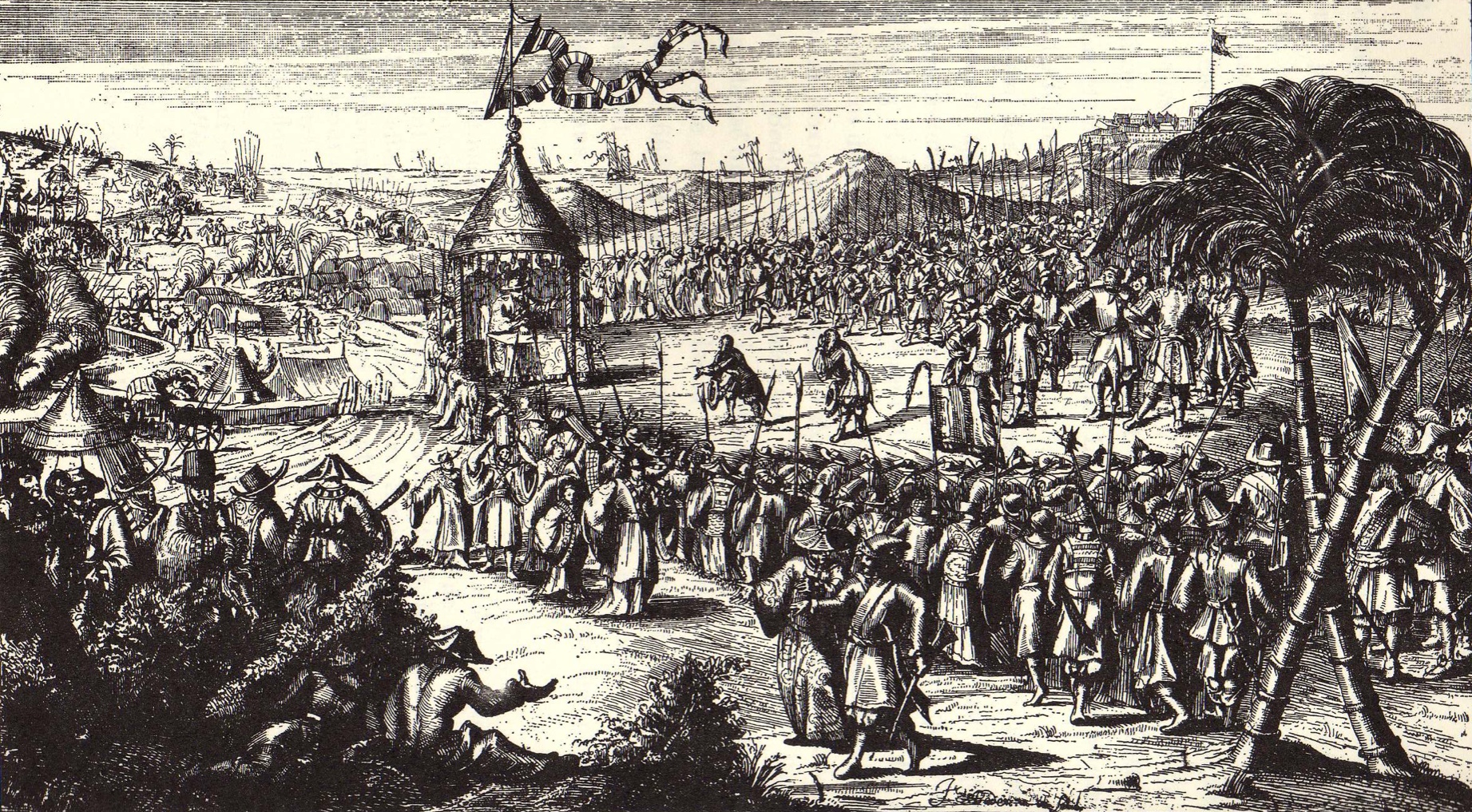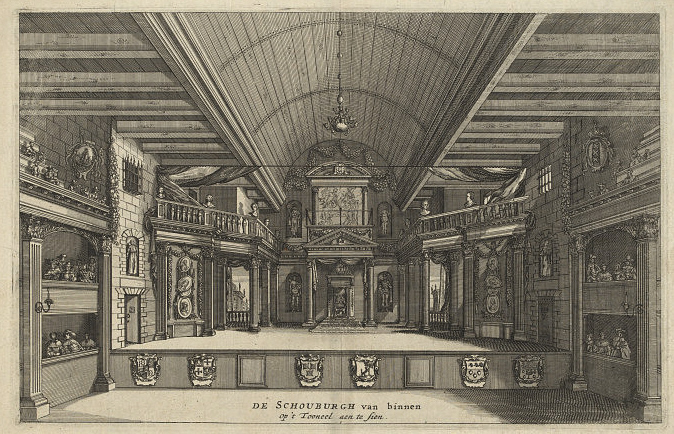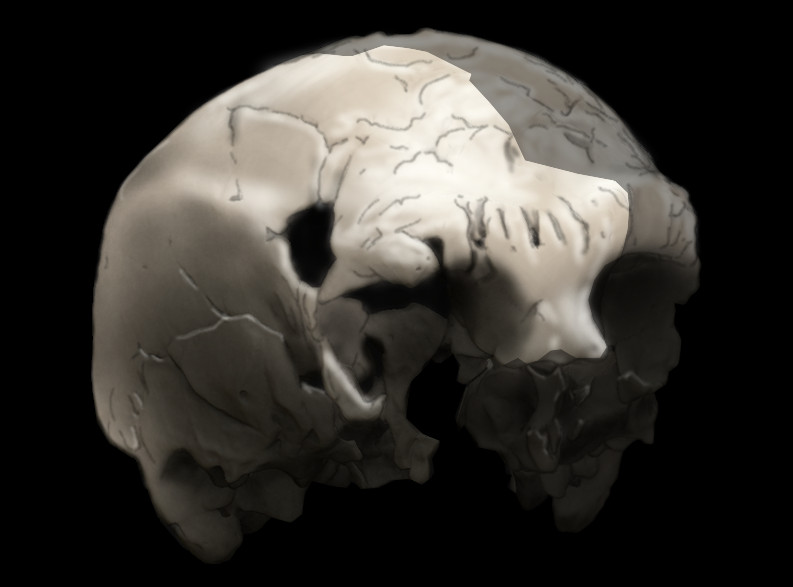|
Pedro Texeira
Pedro Teixeira Albernaz was a Portuguese cartographer born in 1595 in Lisbon, Kingdom of Portugal. He came from a family of cartographers including his father Luís Teixeira, uncle Domingos Teixeira, and his brother João Teixeira Albernaz I who he collaborated with. Around 1610, Pedro went to work in Spain. Pedro served as the royal cosmographer to Philip III of Spain (1598 -1621) and Philip IV (1621-1665). In the years 1622 to 1630 he worked on mapping the coasts of the Iberian Peninsula. Pedro changed his works from nautical charts to topographical survey chart throughout this time period. Pedro was appointed with his brother to make a map of Straits of Magellan and St. Vincent. Pedro died in 1662 in Madrid. Contributions His 1634 work ''La descripción de España y de las costas y puertos de sus reinos'' (''Description of Spain and of the Coasts and Ports of Her Kingdoms'') is preserved in Vienna. Teixeira's map is made of twenty individual folios. The plates for the map wer ... [...More Info...] [...Related Items...] OR: [Wikipedia] [Google] [Baidu] |
Madrid
Madrid ( ; ) is the capital and List of largest cities in Spain, most populous municipality of Spain. It has almost 3.5 million inhabitants and a Madrid metropolitan area, metropolitan area population of approximately 7 million. It is the Largest cities of the European Union by population within city limits, second-largest city in the European Union (EU), and its wikt:monocentric, monocentric Madrid metropolitan area, metropolitan area is the List of metropolitan areas in Europe by population, second-largest in the EU.United Nations Department of Economic and Social AffairWorld Urbanization Prospects (2007 revision), (United Nations, 2008), Table A.12. Data for 2007. The municipality covers geographical area. Madrid lies on the Manzanares (river), River Manzanares in the central part of the Iberian Peninsula at about above mean sea level. The capital city of both Spain and the surrounding Community of Madrid, autonomous community of Madrid (since 1983), it is also th ... [...More Info...] [...Related Items...] OR: [Wikipedia] [Google] [Baidu] |
1662 Deaths
Events January–March * January 4 – Dziaddin Mukarram Shah I of Kedah, Dziaddin Mukarram Shah becomes the new Sultan of Kedah Sultanate, Kedah, an independent kingdom on the Malay Peninsula, upon the death of his father, Muhyiddin Mansur Shah of Kedah, Sultan Muhyiddin Mansur. * January 10 – At the age of 19, Louis I, Prince of Monaco, Louis Grimaldi becomes the new Prince of Monaco upon the death of his grandfather, Honoré II, Prince of Monaco, Honoré II. * January 14 – A Portuguese garrison invades Morocco and kidnaps 35 women and girls, then steals 400 head of cattle. The Moroccans counterattack and kill the garrison's commander, 12 knights and 38 other Portuguese soldiers before the surviving Portuguese are given sanctuary inside the English Tangier, English fortress at Tangier. A brief war ensues between England and Morocco. * January 22 – Former Chinese Emperor Zhu Youlang, Yongli, who had surrendered to General Wu Sangui in December, ... [...More Info...] [...Related Items...] OR: [Wikipedia] [Google] [Baidu] |
1590s Births
Year 159 ( CLIX) was a common year starting on Sunday of the Julian calendar. At the time in Roman territories, it was known as the Year of the Consulship of Quintillus and Priscus (or, less frequently, year 912 ''Ab urbe condita''). The denomination 159 for this year has been used since the early medieval period, when the Anno Domini calendar era became the prevalent method in Europe for naming years. Events By place India * In India, the reign of Shivashri Satakarni, as King Satavahana of Andhra, begins. Births * December 30 – Lady Bian, wife of Cao Cao (d. 230) * Annia Aurelia Fadilla, daughter of Marcus Aurelius * Gordian I, Roman emperor (d. 238) * Lu Zhi, Chinese general (d. 192) Deaths * Liang Ji, Chinese general and regent In a monarchy, a regent () is a person appointed to govern a state because the actual monarch is a minor, absent, incapacitated or unable to discharge their powers and duties, or the throne is vacant and a new monarch ... [...More Info...] [...Related Items...] OR: [Wikipedia] [Google] [Baidu] |
Jesús Escobar
Jesús Escobar is a professor of art history at Northwestern University in Evanston, Illinois. Escobar specializes in the art, architecture, and urbanism of early modern Spain and Italy and has published articles and reviews in journals of art history and early modern studies. His book ''The Plaza Mayor and the Shaping of Baroque Madrid'' (2003) explores the interchange of architecture and politics in the evolution of Madrid from a secondary city of Castile to the seat of a global empire. The book won the Eleanor Tufts Award from the American Society for Hispanic Art Historical Studies and has been revised in a Spanish-language edition published in 2008 by Editorial Nerea. Escobar is working on a new book that examines seventeenth-century architecture and urbanism at the court of Philip IV in Madrid. Escobar was an associate professor of art history and chair of the Department of Visual and Performing Arts at Fairfield University in Fairfield, Connecticut. He held visiting app ... [...More Info...] [...Related Items...] OR: [Wikipedia] [Google] [Baidu] |
Pedro Teixeira Albernaz (1656) Plano De Madrid
Pedro Teixeira Albernaz was a Portuguese cartographer born in 1595 in Lisbon, Kingdom of Portugal. He came from a family of cartographers including his father Luís Teixeira, uncle Domingos Teixeira, and his brother João Teixeira Albernaz I who he collaborated with. Around 1610, Pedro went to work in Spain. Pedro served as the royal cosmographer to Philip III of Spain (1598 -1621) and Philip IV (1621-1665). In the years 1622 to 1630 he worked on mapping the coasts of the Iberian Peninsula. Pedro changed his works from nautical charts to topographical survey chart throughout this time period. Pedro was appointed with his brother to make a map of Straits of Magellan and St. Vincent. Pedro died in 1662 in Madrid. Contributions His 1634 work ''La descripción de España y de las costas y puertos de sus reinos'' (''Description of Spain and of the Coasts and Ports of Her Kingdoms'') is preserved in Vienna. Teixeira's map is made of twenty individual folios. The plates for the map were ... [...More Info...] [...Related Items...] OR: [Wikipedia] [Google] [Baidu] |
Salomon Savery
Salomon Savery (1594–1683) was an engraver from the Dutch Republic. Biography Savery was born in Amsterdam. According to the RKD he was the son of Jacob Savery, brother to Pieter, Hans II and Jacob II, and nephew of Hans I and Roelant (his godfather), and uncle to Geetruyd, Roelant and Magdalena Roghman.Salomon Savery in the His earliest dated print is from 1610, after a work by his uncle Joos Goeimare. He travelled to England in 1632. At times he collaborated with . He d ... [...More Info...] [...Related Items...] OR: [Wikipedia] [Google] [Baidu] |
Folio
The term "folio" () has three interconnected but distinct meanings in the world of books and printing: first, it is a term for a common method of arranging Paper size, sheets of paper into book form, folding the sheet only once, and a term for a book made in this way; second, it is a general term for a sheet, leaf or page in (especially) manuscripts and old books; and third, it is an approximate term for the Book size, size of a book, and for a book of this size. First, a folio (abbreviated fo or 2o) is a book or pamphlet made up of one or more full sheets of paper, on each of which four pages of text are printed, two on each side; each sheet is then folded once to produce two leaf (books), leaves. Each leaf of a folio book thus is one half the size of the original sheet. Ordinarily, additional printed folio sheets would be inserted inside one another to form a group or "gathering" of leaves prior to binding the book. Second, folio is used in terms of page numbering for some bo ... [...More Info...] [...Related Items...] OR: [Wikipedia] [Google] [Baidu] |
Straits Of Magellan
The Strait of Magellan (), also called the Straits of Magellan, is a navigable sea route in southern Chile separating mainland South America to the north and the Tierra del Fuego archipelago to the south. Considered the most important natural passage between the Atlantic Ocean, Atlantic and Pacific Ocean, Pacific oceans, the strait is approximately long and wide at its narrowest point. In 1520, the Hapsburg Spain, Spanish expedition of the Portuguese navigator Ferdinand Magellan, after whom the strait is named, became the first Europeans to discover it. Magellan's original name for the strait was ''Estrecho de Todos los Santos'' ("Strait of All Saints"). The King of Spain, Emperor Charles V, Holy Roman Emperor, Charles V, who sponsored the Timeline of the Magellan–Elcano circumnavigation, Magellan-Elcano expedition, changed the name to the Strait of Magellan in honor of Magellan. The route is difficult to navigate due to frequent narrows and unpredictable winds and current ... [...More Info...] [...Related Items...] OR: [Wikipedia] [Google] [Baidu] |
Portuguese People
The Portuguese people ( – masculine – or ''Portuguesas'') are a Romance languages, Romance-speaking ethnic group and nation Ethnic groups in Europe, indigenous to Portugal, a country that occupies the west side of the Iberian Peninsula in Southern Europe, south-west Europe, who share Culture of Portugal, culture, ancestry and Portuguese language, language. The Portuguese state began with the founding of the County of Portugal in 868. Following the Battle of São Mamede (1128), Portugal gained international recognition as a Kingdom of Portugal, kingdom through the Treaty of Zamora and the papal bull Manifestis Probatum. This Portuguese state paved the way for the Portuguese people to unite as a nation. The Portuguese Portuguese maritime exploration, explored Hic sunt Dracones, distant lands previously unknown to Europeans—in the Americas, Africa, Asia and Oceania (southwest Pacific Ocean). In 1415, with the conquest of Ceuta, the Portuguese took a significant role in the ... [...More Info...] [...Related Items...] OR: [Wikipedia] [Google] [Baidu] |
Iberian Peninsula
The Iberian Peninsula ( ), also known as Iberia, is a peninsula in south-western Europe. Mostly separated from the rest of the European landmass by the Pyrenees, it includes the territories of peninsular Spain and Continental Portugal, comprising most of the region, as well as the tiny adjuncts of Andorra, Gibraltar, and, pursuant to the traditional definition of the Pyrenees as the peninsula's northeastern boundary, a small part of France. With an area of approximately , and a population of roughly 53 million, it is the second-largest European peninsula by area, after the Scandinavian Peninsula. Etymology The Iberian Peninsula has always been associated with the River Ebro (Ibēros in ancient Greek and Ibērus or Hibērus in Latin). The association was so well known it was hardly necessary to state; for example, Ibēria was the country "this side of the Ibērus" in Strabo. Pliny the Elder, Pliny goes so far as to assert that the Greeks had called "the whole of the peninsula" Hi ... [...More Info...] [...Related Items...] OR: [Wikipedia] [Google] [Baidu] |
Philip III Of Spain
Philip III (; 14 April 1578 – 31 March 1621) was King of Spain and King of Portugal, Portugal (where he is known as Philip II of Portugal) during the Iberian Union. His reign lasted from 1598 until his death in 1621. He held dominion over the Spanish Netherlands, Naples, Sicily, Sardinia, and the Duchy of Milan during the same period. A member of the House of Habsburg, Philip III was born in Madrid to King Philip II of Spain and his fourth wife, Anna of Austria (1549–1580), Anna of Austria. The family was heavily Inbreeding, inbred; Philip II and Anna were related both as uncle and niece, as well as cousins. Philip III married his cousin Margaret of Austria, Queen of Spain, Margaret of Austria, the sister of Ferdinand II, Holy Roman Emperor. Although known in Spain as Philip the Pious, his political reputation internationally has generally been negative. Historians C. V. Wedgwood, R. Stradling and J. H. Elliott have described him, respectively, as an "undistinguished and insi ... [...More Info...] [...Related Items...] OR: [Wikipedia] [Google] [Baidu] |




